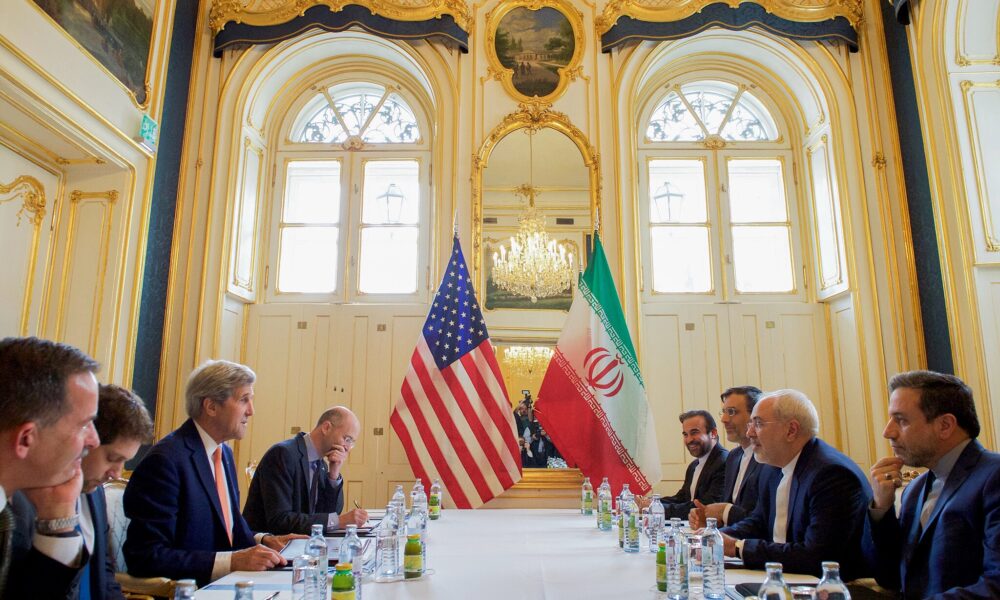The United States entered into direct conflict with Iran last weekend, launching military strikes against three sites associated with Iran’s nuclear program: the Natanz uranium enrichment facility; the Isfahan Nuclear Technology Center, where research is conducted and uranium is processed; and Fordow, a uranium enrichment site buried deep underground. President Trump ordered these attacks without consulting or seeking the authorization of Congress.
The bombings, which included the use of 14 massive earth-penetrating bombs (or “bunker busters”), reportedly caused significant damage to the sites, but whether nuclear materials, equipment, and information at these sites are recoverable—or were even still at the sites—has yet to be determined. Reporting on a classified US Defense Intelligence Agency assessment indicates that the bombing may have only delayed the timeline for Iran to build a bomb—if it were to decide to do so—by a few months. None of these attacks are expected to cause the release of radioactive material beyond the immediate area.
Military intervention is not a permanent solution
The bombings, directed solely at nuclear sites, were described by the president as being designed to destroy Iran’s ability to enrich uranium and to construct a nuclear weapon. US intelligence reports on whether Iran had decided to move ahead with building a weapon prior to the attacks have been consistent: it had not. However, experts fear that the recent attacks by Israel and the United States may change Iran’s thinking. And it is unlikely that attacks such as these on nuclear-relevant infrastructure and the targeted killings of key nuclear scientists (like those Israel undertook prior to the US bombings) will permanently foreclose Iran’s ability to make a nuclear weapon.
Iran’s declared stockpile of 400 kg of uranium enriched to 60% U-235 had been under safeguard by the International Atomic Energy Agency (IAEA), which was inspecting it at least once a day until a few days before the Israeli bombings on June 13. U-235 is the isotope that can be used to sustain a chain reaction leading to the production of nuclear power (at low enrichment levels) or to build a deliverable nuclear weapon (at higher enrichment). Uranium enriched to an isotopic composition of 20% U-235 or greater is considered highly enriched and requires the most intensive safeguards.
Iran seemed to have anticipated attacks on its nuclear infrastructure. As mentioned, a few days before Israel began strikes on Iran, the IAEA ceased having access to these materials. IAEA Director General Rafael Grossi stated that Iran had communicated to him that it would secure those materials in another way. The agency believes that Iran relocated the fuel before the facility was damaged.
Diplomacy was working—until the first Trump administration undermined it
For the last two decades, international diplomatic efforts have focused on Iran’s uranium enrichment activities, attempting to set limits on Iran’s enrichment levels using oversight and safeguards.
In 2015, intensive negotiations between Iran and the five permanent members of the UN Security Council—China, France, Russia, the United Kingdom, and the United States—plus representatives from the European Union and Germany produced the Joint Comprehensive Plan of Action (JCPOA, or the “Iran nuclear deal”) and a Roadmap Agreement between Iran and the IAEA. (See this summary of Iran’s nuclear activities.) The JCPOA provided sanctions relief to Iran in exchange for agreeing to limit its nuclear activities in ways designed to keep it a year away from producing a nuclear weapon. The IAEA would have regular access to Iran’s facilities to monitor compliance. Iran agreed to substantial safeguards on its activities.
Despite repeated assurances from the IAEA that Iran remained in compliance with the agreement, the Trump administration in 2018 withdrew from the JCPOA and reimposed heavy sanctions. While the other parties continued to uphold their end of the deal, Iran began to gradually exceed its limits, though the IAEA continued to monitor Iran’s activities. After the United States’ targeted killing of Iranian General Qasem Soleimani in 2020, Iran stated that it would no longer limit its uranium enrichment activities.
Prior to the 2015 agreement, the Obama administration estimated that it could take as little as two to three months for Iran to produce enough uranium enriched to 90% to build a nuclear weapon. Under the JCPOA, Iran committed to enriching uranium only up to 3.67%—far below the level needed for weapons—for 15 years. After the recent attacks, however, Iran’s stockpile of 60% enriched uranium has likely been dispersed, and any reconstitution of Iran’s nuclear activities, which it almost certainly has the ability to do, may be done covertly, without supervision by the IAEA. Thus, we are now likely to know less about what Iran is doing and, if it does decide to build a nuclear weapon, it will likely take significantly less time than it would have under the restrictions of the JCPOA.
The attacks may have increased Iran’s interest in developing a nuclear weapon
Iran has had access to the materials and knowledge that could produce a nuclear weapon for many years; it has yet to do so. US intelligence assessments repeatedly confirmed that Iran abandoned its weapon program in 2003 and had not changed its mind. Experts fear that the recent attacks by Israel and the United States may have driven Iranian leaders to conclude that Iran must acquire its own nuclear weapons to ensure its security.
This is unfortunate in many ways. This weekend’s actions not only provide incentives for Iran to revisit that decision, but Iran also seems to be signaling with some seriousness that it is considering leaving the Treaty on the Non-Proliferation of Nuclear Weapons (NPT) entirely, which would most likely result in the end of IAEA access to Iran’s nuclear sites. The only other state to exit the NPT was North Korea, which withdrew in 2003.
The attacks undermine important nonproliferation and disarmament tools
Two nuclear-armed states have attacked a non-nuclear state without the backing of the UN Security Council. One of those nuclear states—Israel—is not a party to the NPT, and the other—the United States—has been a key supporter of the nonproliferation regime, having invested extensive financial, political, and scientific resources to establish a reliable, effective, and efficient IAEA safeguards regime. The attacks have undermined the rule of law and international diplomacy as key tools for nonproliferation and disarmament.
Not only have these attacks failed to foreclose Iran’s ability to make a nuclear weapon, they have greatly complicated the challenge presented by Iran. The attacks and their cascading effects will likely make it more difficult for the international community to ensure the nonproliferation of nuclear weapons and to pursue nuclear disarmament, both key obligations of the NPT.

